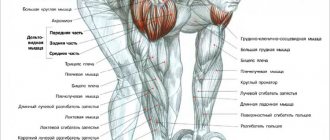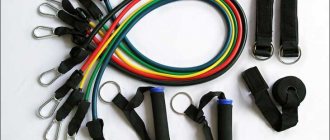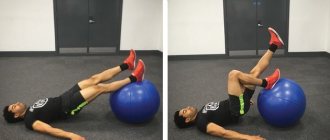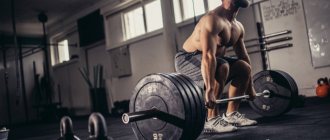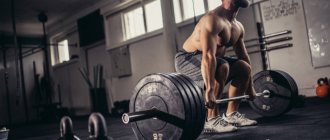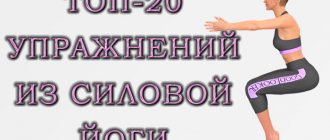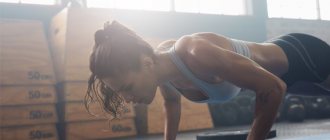Technique for performing exercises with weights
In fact, the technique of performing exercises with kettlebells is quite simple. If we compare kettlebell fitness and any other type of weightlifting (bodybuilding, powerlifting), where it is strictly necessary to take into account certain points and principles of training, then there are no hard and fast rules. The projectile can be pushed in any convenient direction, since at the moment of performing pushing actions the body itself is able to evenly distribute the resulting physical load.
When training with kettlebells, most of the muscles are involved in the work. Therefore, physical activity will be intense. And after training, a powerful hormonal surge occurs, the metabolic process improves, which allows you to quickly gain muscle mass and increase strength. Therefore, the importance of kettlebell fitness for men cannot be underestimated.
Sleeping mode
An athlete should sleep at least 7-8 hours, on days of heavy loads, before and after competitions - up to 9-10 hours. Try to go to bed and get up at the same time. Sleeping from 2:00 to 10:00 and from 22:00 to 6:00 is a big difference, although the same 8 hours. In the second case, sleep is more complete and physiological from the point of view of biorhythms and the functioning of internal organs. Remember that one hour of sleep before midnight is equivalent to two hours of sleep. Training is a huge stress for the nervous system, give it and other organs these 8 hours of rest.
How to train with a kettlebell
There are a few simple rules for those who are just starting to master this type of training.
First of all, take advantage of the help of an experienced trainer who will competently organize not only your workout, but also give the right advice on individual nutrition. This is also a very important point that must be taken into account when practicing kettlebell fitness. Before training, be sure to warm up. Exercises for flexibility, working out all joints, as well as regular walking on a treadmill, etc. are perfect.
It is recommended to carry out training gradually, without forcing events. You should increase your weight as you develop physically. The athlete himself must feel the moment when a heavier apparatus is needed (16 kg, 24 kg, 32 kg). The listed weights are historically established standards for competitions. For beginners, it is recommended to start with weights of 8 or 12 kilograms.
If you work out with a trainer, he should divide your workout into blocks. After completing each of them, you will rest for 4 minutes. This time is enough to restore breathing and blood circulation.
Heart rate self-monitoring
Now let's talk a little about heart rate (HR), conventionally meaning pulse by this concept. Heart rate is a simple but reliable indicator of adequate recovery; it is variable and depends on many things, but the constancy of the value calculated in the morning, at rest after waking up, indirectly indicates that you are able to tolerate training normally.
Speaking about heart rate, we cannot fail to mention MOC (maximum oxygen consumption), which many professional athletes and sports doctors know about, but amateur athletes know little about. VO2max is the largest amount of oxygen that the heart can deliver to the muscles and which the muscles can use to produce energy. It is one of the indicators of the level of fitness, but depends not only on exercise, but also on individual genetic predisposition. BMD is calculated in the clinic using special equipment; it’s good if you have the opportunity to determine it regularly, at least once every six months.
Monitor your heart rate, especially if you are a beginner athlete. Measure your heart rate immediately after exercise. It is believed that you should train at a heart rate that is 60-90% of your maximum heart rate or 50-85% of VO2max. Instead of MOC, you can use the calculation of the maximum heart rate (220 - age) or, better, the maximum heart rate reserve:
Maximum heart rate reserve = maximum heart rate - heart rate at rest (when waking up, without getting out of bed).
For example, with a maximum heart rate of 190 and a resting heart rate of 50 beats per minute, the maximum heart rate reserve would be 140 beats per minute. Then we calculate 50-85% of the maximum heart rate reserve. These will be the limits of load intensity that you need to focus on. You should not exercise at maximum and submaximal heart rate. Therefore, you need to calculate the optimal numbers for yourself, and, if you take your classes seriously, track your indicators. This will help in the future, by reducing the pulse zone, to increase the intensity of training when the heart adapts to it. Measuring heart rate immediately after exercise is not entirely accurate: a gradual decrease in its frequency at rest leads to errors (so count in 10 seconds and multiply by 6). It is better to use monitoring (heart rate monitor), it will also help you in running. True, I have not yet seen a single weightlifter with a heart rate monitor.
It has already been said about the frequency of kettlebell training per week. There is no need to practice more than three times to speed up results. Firstly, this does not lead to an increase in MOC, and secondly, it will allow the stressed muscles to rest.
Bent-over kettlebell row
It is one of the basic kettlebell fitness exercises for working the back muscles. Mainly – the widest. In this case, 10 muscle groups are involved in the work one way or another. You can perform the exercise while standing or leaning your free hand on a bench. The pull is produced by contracting the latissimus dorsi muscle and flexing the arm at the elbow joint.
This exercise has gained popularity due to its simple technique and low risk of injury. However, there are several important recommendations for its implementation, which should not be neglected:
- the body is tilted strictly at an angle of 30 degrees relative to the plane of the support,
- all movements are performed smoothly, without jerking,
- at the lowest point the projectile is lowered until the arm is fully extended at the elbow,
- at the top point the projectile must be held for a couple of seconds to create static tension in the muscles,
- Bending at the hip joints and swaying of the body is not allowed,
- bending is done at an angle away from you so that the load is on the latissimus muscle and not on the biceps.
It is better to start with a small weight weighing 8 kilograms. Once you can do 50 reps, you can move on to heavier weights.
How is a kettlebell different from a dumbbell?
Now many people may ask a logical question: why is a kettlebell better than a dumbbell?
Nothing better, these are two completely different shells. However, in a number of exercises, using a kettlebell can be more convenient due to the fact that the weight in it is under the handle, while the weight of a dumbbell is evenly distributed on both sides of the handle, and in some movements this can interfere. For example, they are not very convenient to use as weights in fitness exercises - unlike kettlebells, which are excellent for these purposes.
Swing kettlebells from bottom to top
This kettlebell fitness exercise is an excellent cardio workout for those who want to lose weight. You just need to take a lighter projectile (8–12 kg). For those who prefer heavier weights, it will successfully replace the deadlift. When performed correctly, the muscles of the lower body are perfectly worked out: quadriceps, hamstrings, gluteals, as well as the muscles of the lumbar back. A good load is also given to the abs.
The starting position is as follows:
- stand up straight, feet slightly wider than shoulders,
- socks point to the sides at an angle of 45 degrees,
- feet pressed firmly to the floor throughout the entire exercise,
- the center of gravity is transferred to the heels,
- we move the pelvis back, while keeping the back straight,
- the gaze is directed straight ahead,
- the weight is on the floor between the legs.
On the count of one, we lift the weight off the floor with both hands and swing it back to the level of the buttocks. You can bend forward slightly, but the main thing is not to bend your back. On the count of two, we jerk forward using the muscles of the legs and buttocks. Inertia will direct the projectile upward, but this movement must be controlled. With the correct technique, the weight rises to chest level, and then, through the efforts of the deltoid muscles, is brought to the jaw line. Above is wrong!
On the reverse movement, the projectile reaches the level of the knee and is wound behind the heels. After which everything is repeated again. To control the movement of the kettlebell at each stage, it is not recommended to relax the buttocks at the top point. Also, you should not lift your heels off the floor, otherwise the heavy projectile may lead you to the side. And this is fraught with back injury. Therefore, it is better to start with small weights. The standard number of repetitions is 20–30.
Equipment for kettlebell lifting
The right choice of equipment is not necessary for beauty, it reduces the likelihood of injury and helps make exercise easier.
♦ WEIGHTHEADS (SHOES) – borrowed from weightlifters. They fix the ankle, protecting it from dislocation, thanks to thick leather material and lacing along the entire length of the barbell. A heel of up to 2 cm is allowed.
♦ WEIGHTLIFTING BELT – should be leather-based, no more than 12 cm wide. Its main purpose is to fix the lumbar region in order to avoid deflection of the lower back and its injury.
♦ T-shirts and bicycle shorts – outerwear should be short-sleeved, 10 cm above the elbow. The lower part should also not cover the knees.
♦ BANDAGES – have an elastic base, used to avoid injury to the knee joints;
♦ Wristbands – secure the wrists, relieving pain. Usually their width does not exceed 10 cm.
Kettlebell overhead push
I call this exercise the king of kettlebell fitness because it demonstrates the power of the entire body. In the classic version, it is performed with two weights, but for beginners it is better to train with one. The most interesting thing is that the weight is not thrown up by the hand - it only guides the projectile and helps it reach the top point. The main work is done by the legs and chest.
If the starting position is correct, then this is already half the success. Therefore, the kettlebell, taken with a “toward” grip, should rest on the chest and forearm, and not on the shoulder. While performing the exercise, you need to squat down a little to get the necessary acceleration for the push. For a pro, it’s enough to sit down just 5 centimeters. For beginners you can go below. The movement is forward and upward, that is, the weight is pushed mostly by the chest, and the hand only helps slightly.
The weight is brought to the top point behind the head. In this case, the body, from the hand to the heels, should form one straight line. The projectile must be returned to its original position carefully, extinguishing the force of inertia. To do this, firstly, we perform an upward movement with the chest, as in a jerk. And then we do a small squat, gently taking the weight to the chest. This will avoid serious injury.
The number of repetitions is not standardized. At competitions, athletes perform this exercise with kettlebells for 10 minutes, demonstrating their maximum strength.
Balanced diet
Kettlebell lifting, which develops endurance, with a large number of repetitions in exercises, requires regular balanced nutrition. It is necessary that the supply of nutrients covers the costs. How to do it?
A balanced diet implies a sufficient intake of proteins, fats, carbohydrates, vitamins and minerals from the daily diet. The ratio of proteins, fats and carbohydrates will vary depending on what your goal is: gaining weight, maintaining it or cutting. On average, if we are not losing or gaining weight, we weightlifters need about 50% carbohydrates, 30% protein and 20% fat during the day. Without calorie tables, these numbers don’t mean anything, but knowing how much and what we get from food is useful for a weightlifter in terms of controlling and adjusting weight before competitions.
If you don’t want to pick or dry, much less bother with calculations, just follow these rules:
- Eat regularly. Regularly - this is not daily, this is 4-6 times a day in sufficient portions (which means not overeating and not leaving the table half-starved).
- The break between “approaches” is no more than 4 hours, optimally 3-3.5 hours. Long intervals trigger catabolic processes (simply destructive), lead to stagnation in the gallbladder and can lead to diseases of the digestive system.
- Breakfast is the most important thing! Never miss it. Breakfast should be nutritious, but light. Oatmeal or multigrain porridge with optional additives is ideal: milk, butter (preferably vegetable oil, for example, flaxseed with a lot of healthy omega acids), dried fruits. In addition to oatmeal, you can eat other porridge, omelet, baked goods with a little butter, cheese, and add fruit to all this.
- In the next 2-3 meals, eat complex, or slow, carbohydrates with proteins (meat, poultry, fish) + raw vegetables, vegetable salads, herbs.
- The last meal (about 2 hours before bedtime) is predominantly protein; cottage cheese and unsweetened fermented milk drinks are perfect for this.
- During the day, you can include small “healthy” snacks in your diet: fruits, dried fruits, nuts, yoghurts.
- Before training, eat 1.5-2 hours before training. Immediately after class, you need to throw in some high-glycemic foods (those that quickly increase blood sugar): sweet fruits, raisins, baked goods, cookies, muesli bars, rice - about 50 g of carbohydrates (or 0.7 g/kg body weight). This will speed up the recovery of glycogen in the muscles and close the notorious “carbohydrate window”, if it really exists. For example, I always have a couple of bananas in my bag; I eat them right in the locker room or on the way from training. I often drink half a liter of yogurt with a loaf of bread – that’s also great.
- Try not to eat harmful and “empty” foods that simply fill your stomach and do not provide any benefit (sausage, cakes, candies, canned vegetables), limit to a minimum, or better yet, completely eliminate fried foods, fatty and spicy deli meats, smoked meats and alcohol.
Now about something equally important – drinking regime . An athlete needs much more water than an ordinary person. The recommended 2 liters is the minimum you can afford. Drink simple purified non-carbonated water between meals, 20-30 minutes before and 30-40 minutes after, drink a glass of water on an empty stomach after waking up, this prepares the digestive tract well for breakfast.
- You can and should drink water during training! These should be frequent doses of 2-3 sips, do not drink in one gulp, otherwise the water gurgling in the stomach will greatly interfere and push and tear the weights.
- During classes, a weight lifter loses not only liquid, but also minerals through sweat. Replenish lost electrolytes by drinking tomato or fruit juices. In case of excessive sweating, heavy training, especially in a stuffy room, drink isotonic drinks before and after cross-country runs. This will ensure rehydration and help the work of your muscles, and the most important of them - the heart muscle, and will prevent rhythm and metabolic disturbances in the myocardium, which are often found among athletes.
- By the way, isotonic water can be easily prepared at home. To do this, dissolve a pinch of salt (1 g) and 20 g of sugar or honey (level tablespoon) in 50 ml of warm water, add 30 ml of lemon juice and then 350 ml of cold water.
Goblet Squats
This exercise from the arsenal of kettlebell fitness is especially popular among the fair sex, as it is great for pumping up the gluteal muscles. However, men will also benefit from it a lot. With the help of goblet squats, you can strengthen the muscles of your legs and back, and also prepare for a more serious challenge - the barbell squat.
The technique is quite simple. The simplest example of how to do this exercise correctly is to imagine that you are slowly sitting down on a chair, and then also slowly getting back up. The kettlebell is held with both hands in front of the chest, like a goblet (hence the name). We place our feet at a comfortable width for ourselves, with our toes slightly pointed to the sides.
We squat to knee level (deeper is possible, but not necessary). At the same time, keep your back straight. The simplest way to self-control is to look straight ahead. The muscles of the buttocks and abs should remain tense when performing exercises with a kettlebell. And don't forget to breathe correctly. We squat as we inhale, stand up as we exhale.
We perform 3-4 sets of 10-15 repetitions.
Self-control
Self-control allows you to avoid overexertion and overtraining. The best way to keep track of your routine is to use a diary. Unfortunately, few people do this now. The self-control diary is not only a reflection of how much time you practice, the number of exercises and approaches. Every day during and after training, note how you bear the load and where pain occurs.
It is not necessary to write in a diary, but you need to track your well-being, sleep, performance, desire to exercise, sweating during training. Measure your weight once a month or more often if necessary.
I’ll tell you how I keep a diary - the scheme has been worked out: it’s most convenient to do it in the form of a table, I write the date, kettlebell plan, general physical fitness (how many, what), number of pull-ups, abdominal exercises, on other days - cross-country runs in km. If I didn’t follow the coach’s plan, I note how much I didn’t do and why; competitions are planned - the desired result. Tolerance of strength and cardio loads, well-being, activity and mood, everything in general, is expressed in my simple but informative system of emoticons - “bad”, “neutral”, “good”. This way, it’s easy to track your progress, and what was once difficult is now easy. I don’t want to, but I have to note where, what and when it hurt, the possible cause, treatment, effect; I write what supplements I took, the duration of the courses.
Kettlebell Bench Press
With this kettlebell fitness exercise you can perfectly strengthen your pectoral muscles. To perform it, you need to lie on the floor, spreading your legs to shoulder width. Experienced weight lifters press two weights at once, but beginners are better off pushing them one at a time. It is recommended to start with one projectile. In this case, we move our free hand slightly to the side. We place the weight on the bend of the elbow of the working arm. The elbow itself is pressed to the body.
At the moment of the push, the hand with the weight turns with the palm towards the legs. We return the projectile to its original position in the reverse order. You should also remember that the weight is pushed as you exhale.
The number of repetitions depends on the weight of the projectile. With weights from 16 kg, you can train according to the classic scheme: 5 sets of 5 repetitions. With a weight of 8 kg, the number of repetitions will be twice as many.
Benefits of kettlebell lifting
♦ develops strength endurance
♦ multi-repetition training improves coordination and speed qualities;
♦ the condition of not only muscle fibers and ligaments, but also the heart muscle improves;
♦ blood pressure is normalized, elasticity is improved and blood circulation increases;
♦ if the correct technique is followed, joint mobility is maintained and developed.
What else you need to know about kettlebell fitness
Your workouts with weights should be systematic, which will allow you to quickly burn fat and gain the desired muscle mass. In order for the classes to be as effective as possible, it is also advisable to create a nutrition program based on the individual characteristics of the body. There is only one person you can trust to do this – your personal trainer.
Kettlebells are much more difficult to work with than dumbbells because many more muscles are involved. However, the efforts made will be fully rewarded. Of course, subject to proper dedication, as well as the correct training, rest and nutrition regimen.
Why is it so important to adhere to the regime?
We all eat poorly to varying degrees, sleep little, and think that we really relax by lying on the couch for hours and staring at the screen. Don’t be surprised then that your results don’t improve, you don’t have the strength to train because the coach gives you a difficult plan, you want to sleep, it’s all spring’s fault, etc. I know weightlifters who work at night and then come to train, others eat three times a day and wonder why they don’t gain weight, others unreasonably overdo the weight of the barbell, and then everything hurts and the special part of the workout doesn’t work.
Immediately determine for yourself whether you are an athlete or doing physical education “for yourself” with weights, what you want to achieve, set your priorities. Do you have goals: fulfill the standard, win a competition, update a personal record? Yes, go ahead boldly, but true adherence to the regime will require some sacrifices. It may seem so at first, but you will gain much more. Ensure your athletic longevity by making the regime a regular way of life.
Sports mode combines exercise, rest, sleep and nutrition. All this is needed to “reanimate” wasted resources: strength, energy, muscles, metabolic substrates.
